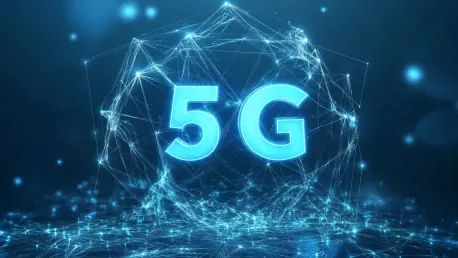The health and social care sectors are on the brink of a digital revolution, driven by the integration of advanced technologies like 5G and artificial intelligence (AI). As the National Health Service (NHS) in England grapples with increasing demands and limited resources, the adoption of these technologies is not just beneficial but essential. The COVID-19 pandemic has accelerated digital health advancements, yet significant gaps remain. Digital connectivity solutions, particularly 5G and AI, are seen as transformative tools that can increase efficiency and help the NHS manage its growing workload, especially amid the challenges presented by an aging population and chronic health conditions.
The Shift from Hospitals to Home and Community Care
The traditional model of healthcare delivery, centered around hospitals, is becoming increasingly unsustainable. To alleviate the strain on the NHS, there is a pressing need to transition care delivery to home and community settings. This shift is facilitated by digital technologies, particularly AI and 5G, which enable remote monitoring, telehealth services, and real-time data sharing. By leveraging these technologies, healthcare providers can offer more personalized and efficient care, reducing the need for hospital visits and admissions. Advanced connectivity solutions like 5G play a pivotal role in this transformation. The increased bandwidth and reduced latency of 5G networks support a range of applications, from real-time video consultations to the sharing of high-resolution medical images. These capabilities enhance the quality of care and ensure timely interventions, ultimately improving patient outcomes and reducing healthcare costs.
Moreover, the ability to perform real-time diagnostics and consultations remotely can drastically reduce pressure on emergency services and hospital departments. For patients, this means more convenient and timely access to medical care, thus minimizing the need for physical travel and waiting times. For healthcare providers, real-time connectivity facilitates seamless communication among multidisciplinary teams, making it easier to coordinate care plans. This transition from hospital-centric to community-based and in-home care, supported by advanced digital technologies, represents a significant evolution in the delivery of healthcare. It aims to provide better patient experiences while optimizing the use of resources within the NHS.
Addressing the Gaps in Digitization and Connectivity
Despite the progress made in digital health, the NHS still faces significant challenges in achieving full digitization and connectivity. These challenges are exacerbated by the UK’s aging population and the growing burden of chronic conditions, which consume over 70% of the NHS budget. To address these issues, it is essential to invest in robust digital infrastructure and advanced technologies. For instance, 5G connectivity is a game-changer in this regard. Its ability to support multiple devices and services on a single network makes it ideal for healthcare applications. For instance, 5G can facilitate long-distance consultations and collaborations, enabling healthcare professionals to provide expert care regardless of geographical constraints. This is particularly beneficial for rural and underserved areas, where access to specialist care is often limited.
In addition to facilitating remote consultations, the high-speed connectivity of 5G allows for the integration of various medical devices and sensors that can continuously monitor patients’ vital signs. This continuous monitoring is especially valuable for managing chronic conditions, where timely data can anticipate medical issues before they become emergencies. Furthermore, advanced analytics powered by AI can process this data to offer predictive insights, making it possible for healthcare providers to intervene proactively. As the NHS evolves, closing the gaps in digitization and connectivity will not only improve healthcare delivery but also ensure that resources are used more efficiently. The impact of such advancements is profound, making healthcare more responsive and capable of meeting the increasingly complex needs of the population.
Enhancing Efficiency and Sustainability
The implementation of advanced connectivity solutions can significantly enhance the efficiency and sustainability of the NHS. By utilizing 4G and 5G networks, the NHS can optimize its physical estate through the use of energy monitoring sensors, occupancy detectors, and smart lighting. These technologies help reduce power consumption, lower operational costs, and contribute to environmental sustainability. The role of advanced connectivity extends beyond just operational efficiency; it also supports the deployment of sensors for community health monitoring. These sensors can track the well-being of patients and caregivers, ensuring continuity of essential services. This is especially important as older connectivity frameworks are phased out.
The use of 5G networks enables the expansion of services to include medication adherence, predictive health monitoring, and tools to combat social isolation and loneliness. For example, connected devices can remind patients to take their medications on time or alert caregivers if a patient has missed a dose. Predictive analytics can identify patterns that suggest a potential health decline, allowing for timely interventions before conditions escalate. Reducing social isolation among the elderly is another critical area where 5G connectivity can play a role, by facilitating social interactions through virtual platforms and smart devices. The cumulative effect of these applications demonstrates the potential of advanced connectivity to make healthcare not just more efficient but more compassionate and patient-centered.
Integrating Health and Social Care Networks
One of the most significant advantages of 5G is its ability to act as a dynamic, scalable network platform that enhances connectivity across health and social care networks. This integration is vital for coordinating care among complex sites, third-party organizations, and remote medical and care workers. Reliable connectivity is essential for telehealth and telecare services, which support a shift towards preventative care. The deployment of private 4G or 5G networks within hospital settings or communities offers a more affordable alternative to commercial networks. These private networks can provide high-quality healthcare services to underserved areas, as demonstrated by the Liverpool 5G project. By deploying a network in one of the city’s most socially deprived areas, the project made significant strides in improving access to healthcare services.
Such initiatives underscore the importance of tailored connectivity solutions in addressing the specific needs of different communities. Beyond healthcare delivery, reliable and high-speed internet access ensures that patients in remote or economically disadvantaged areas can benefit from the same quality of care as those in urban centers. This democratization of healthcare services, facilitated by advanced 5G networks, ensures that no patient is left behind due to infrastructural challenges. The broader implication is the creation of a more equitable healthcare system where technology bridges gaps rather than widens them.
Real-World Applications and Community Initiatives
The health and social care sectors stand on the verge of a digital revolution, propelled by the incorporation of cutting-edge technologies such as 5G and artificial intelligence (AI). In England, the National Health Service (NHS) is facing escalating demands alongside constrained resources, making the adoption of these technologies not only advantageous but crucial. The COVID-19 pandemic has hastened the pace of digital health advancements; however, significant gaps still exist. Solutions in digital connectivity, particularly through 5G and AI, are viewed as transformative tools that have the potential to boost efficiency and assist the NHS in handling its increasing workload. This is particularly important given the challenges posed by an aging population and the prevalence of chronic health conditions. The technology can streamline administrative tasks, enhance patient care, and improve overall operational effectiveness, ensuring that the NHS can meet the complex health needs of the population in a more sustainable manner.









